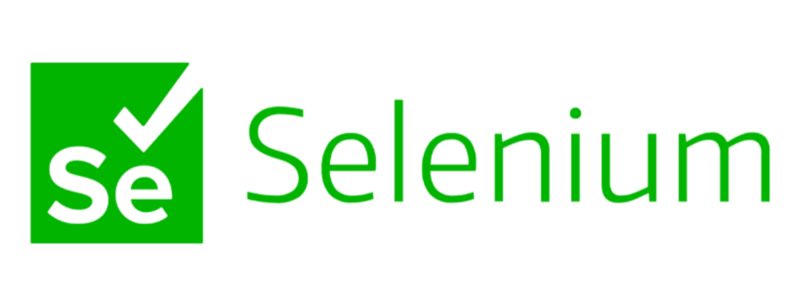In the rapidly evolving world of web automation and testing, the name Selenium has stood as a stalwart for years, providing developers and testers with a versatile toolset to automate browser interactions. While Selenium has been a cornerstone in this field, technological advancements and changing requirements have given rise to a need for Selenium alternatives that offer unique advantages and solutions. In this in-depth exploration, we delve into the realm of web automation tools, shedding light on their features, benefits, and the compelling reasons behind seeking alternatives to the tried-and-true Selenium.
Unveiling Selenium’s Versatility and Limitations
1. Features that Make Selenium Shine
Selenium’s prominence in the realm of web automation stems from its multifaceted feature set. With cross-browser compatibility at its core, Selenium empowers developers to create tests that can be seamlessly executed across different browsers. This support extends to various programming languages, including Java, Python, C#, and more, catering to diverse development teams.
A highlight of Selenium is its robust WebDriver, a powerful API that allows precise interaction with web elements, from clicking buttons and filling forms to navigating complex web pages. The open-source nature of Selenium has fostered a thriving community that continually contributes extensions and plugins, enhancing its usability and extending its capabilities.
2. The Limitations to Acknowledge
Even with its remarkable features, Selenium does present certain limitations. Setting up Selenium, especially for newcomers, can be a daunting task, involving intricate configuration and the management of dependencies. This initial complexity might deter some developers from harnessing its power.
As web applications evolve, maintaining test scripts can become a challenge, often leading to brittle tests that require frequent updates. Furthermore, Selenium’s performance can suffer when dealing with intricate web applications or when attempting parallel test execution, potentially impacting testing efficiency.
Why is There a Need to Look for a Selenium Alternative

1. Evolving Technological Landscape
The realm of web development and automation is in a constant state of flux, with new frameworks, libraries, and languages emerging at a rapid pace. As the technological landscape evolves, the demands placed upon web automation tools evolve as well. In this dynamic environment, the ability to seamlessly integrate with the latest advancements becomes crucial. Selenium, while venerable, may not always keep pace with the cutting-edge demands of modern web applications.
2. Performance Optimization
In the competitive digital landscape, every millisecond counts. While Selenium has effectively served the testing community, certain projects demand heightened performance and efficiency. Selenium Alternatives may offer superior execution speeds and optimized resource utilization, making them particularly attractive for applications that require rapid, high-frequency testing or large-scale test suites.
3. Simplified Setup and Maintenance
The journey from initial installation to ongoing script maintenance can significantly impact testing efficiency. Selenium’s setup process, albeit comprehensive, can be intricate and time-consuming, especially for newcomers. Selenium Alternatives often prioritize user-friendliness, streamlining setup, and reducing the complexity of maintenance. This emphasis on ease of use can translate to a more efficient testing workflow, saving time and resources in the long run.
4. Specialized Testing Needs
Different projects have distinct testing requirements, and seeking an alternative tailored to your project’s needs can yield remarkable benefits. For instance, if you are predominantly working with Angular applications, a Selenium alternative like Protractor, specifically designed for Angular testing, might offer a more streamlined and effective testing process. Similarly, if your focus is on mobile application testing, Selenium alternatives like Appium can provide specialized capabilities that cater to this domain.
The Quest for Selenium Alternatives: Navigating Your Options

1. Playwright: Microsoft’s Modern Marvel
Playwright has emerged as a formidable contender in the realm of web automation, carrying the Microsoft stamp of reliability. This library boasts robust support for multiple browsers, including Chromium, Firefox, and WebKit. Furthermore, Playwright’s support for various programming languages, such as JavaScript, Python, and TypeScript, ensures that developers can work with their language of choice. A standout feature of Playwright is its ability to record and replay interactions, simplifying test creation. Additionally, comprehensive documentation and an active community contribute to a smooth adoption process.
2. Cypress: Tailored for the Modern Web
Cypress has gained prominence by addressing the needs of modern web development practices. One of its distinguishing features is real-time browser testing, providing instant feedback to developers. Automatic waiting ensures that tests run smoothly, reducing the need for manual intervention. The Cypress API is designed with simplicity in mind, allowing developers to write tests quickly and intuitively. The interactive nature of Cypress’s user interface offers a visual and user-friendly experience, further enhancing its appeal.
3. TestCafe: The Cross-Browser Champion
TestCafe shines in its ability to ensure consistent testing across multiple browsers, alleviating the compatibility challenges that can arise during cross-browser testing. A noteworthy aspect of TestCafe is its elimination of browser plugins; tests run without requiring any extensions, enhancing the portability of test scripts. Additionally, TestCafe supports parallel test execution, a critical feature for optimizing test suite efficiency, especially when dealing with a large number of tests.
4. Puppeteer: The Headless Hero
Google’s Puppeteer has gained popularity as a headless browser automation tool. It provides seamless integration with the headless Chrome browser, allowing developers to automate tasks without a visible browser window. Puppeteer’s capabilities extend beyond testing and into web scraping, with the ability to capture screenshots and generate PDFs. Its user-friendly API and the familiarity of working with Chrome make it a compelling Selenium alternative for various automation tasks.
5. Watir: The Ruby Gem
Watir, short for “Web Application Testing in Ruby,” caters to developers who favor the Ruby programming language. Known for its simplicity and ease of use, Watir offers an intuitive syntax that allows developers to write concise and effective test scripts. The library’s focus on user-friendliness makes it an attractive option, particularly for those already comfortable with Ruby development.
6. Protractor: Angular’s Ally
Protractor steps in as the go-to choice for testing Angular applications. Its seamless integration with Angular’s testing ecosystem simplifies the process of testing Angular-specific elements and functionalities. Protractor’s support for both Angular and non-Angular applications, coupled with its comprehensive set of tools, enhances its versatility.
7. Katalon Studio: The All-in-One Solution
Katalon Studio distinguishes itself as a comprehensive solution for testing a wide range of applications, including web, mobile, API, and desktop. Its dual capabilities of script-based and codeless testing provide flexibility to both technical and non-technical users. Katalon Studio’s integrated environment facilitates end-to-end testing, making it a valuable asset for organizations seeking a unified testing platform.
8. Robot Framework: The Keyword-Driven Dynamo
Robot Framework adopts a unique keyword-driven approach, abstracting complexities and making test creation accessible to testers with varying technical backgrounds. Its extensible architecture and support for multiple application types, including web and mobile, enable seamless testing across different domains.
9. Appium: The Mobile Marvel
Appium has emerged as a powerhouse for mobile application testing, catering to the diverse landscape of native, hybrid, and mobile web applications. Its cross-platform capabilities and consistent API design make it a preferred choice for organizations looking to ensure the quality and performance of their mobile apps across different devices and operating systems.
10. SikuliX: Image Recognition Innovator
SikuliX takes a novel approach to automation by leveraging image recognition. This unique feature allows developers to automate tasks by identifying and interacting with visual elements on the screen. SikuliX shines in scenarios where traditional methods fall short, enabling automation in cases where UI elements are challenging to access through conventional means.
Factors to Consider: Choosing Your Ideal Selenium Alternative

1. Suitability for Project Requirements
Selecting the right Selenium alternative hinges on its compatibility with your project’s unique requirements. Factors to consider include the technology stack, the type of application being tested, and the specific functionalities needed for effective testing.
2. Learning Curve and Ease of Use
A Selenium alternative’s ease of adoption is paramount, especially in teams with varying technical proficiencies. Consider the learning curve associated with each tool and how quickly your team can become proficient in using it.
3. Community and Documentation
A thriving community and comprehensive documentation can greatly impact your experience with a particular tool. A strong community ensures access to timely support, while well-maintained documentation facilitates efficient troubleshooting and knowledge sharing.
4. Performance and Speed
Efficiency in testing is often determined by the performance and speed of the chosen alternative. Evaluate how each tool performs, particularly in scenarios where your web application demands rapid and resource-efficient testing.
5. Integration Capabilities
Seamless integration with your existing development and testing tools is crucial for a smooth workflow. Consider how well each alternative aligns with your current toolset to ensure compatibility and minimize disruptions.
In Conclusion
The realm of web automation tools has expanded dramatically, presenting a diverse array of alternatives to the venerable Selenium. While Selenium’s legacy remains unchallenged, the alternatives highlighted in this guide offer compelling solutions tailored to diverse needs. Whether you seek streamlined simplicity, Angular-specific prowess, mobile application testing expertise, or innovative image recognition capabilities, there is an alternative that aligns with your project’s goals. As technology continues to evolve, the pursuit of the perfect Selenium alternative becomes not a question of “if” but rather a strategic choice of “which.”









